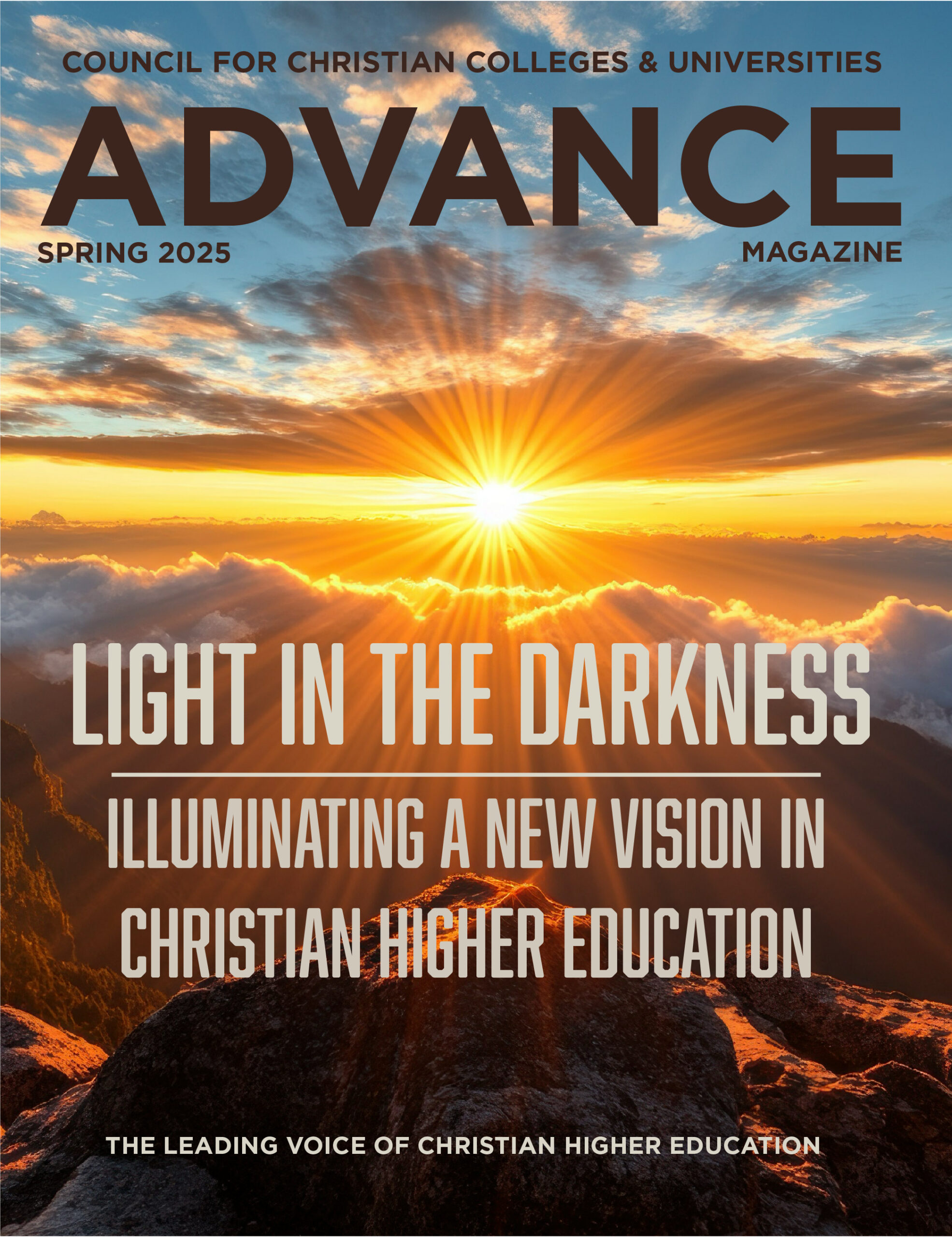Magazine
The tax cuts and Jobs Act (H.R. 1) garnered countless headlines between its introduction on Nov. 2, 2017, and its signature into law by the president a few weeks later. Depending on whether you listened to President Donald Trump or House Minority Leader Nancy Pelosi, it was either “one of the great Christmas gifts” for the middle class or “the worst bill in the history of the United States Congress.” For some organizations, it was a windfall; for others, it was a wake-up call. In the midst of all this activity, a little-noticed yet far-reaching provision became law. It has gained increasing attention in 2018 as colleges, churches, and other nonprofits realize they now face a new tax on – of all things – parking.
The Provision
On any given work day, university faculty and staff commute to their campus by car or public transportation. Now, their employer may face a 21 percent tax for providing a parking spot or transportation benefits – even if it’s required to do so by local ordinances.
Section 512(a)(7) of the tax law (Public Law 115-97) includes:
Unrelated business taxable income of an organization shall be increased by any amount … which is paid or incurred by such organization for any qualified transportation fringe … any parking facility used in connection with qualified parking … or any on-premises athletic facility.
This provision is tied to the section on deductions for for-profit organizations. Essentially, for instances where for-profit organizations can no longer receive tax deductions, nonprofit organizations will now face a 21 percent tax. Currently, because deductions are generally still allowed for parking facilities and on-premises athletic facilities, transportation fringe benefits and qualified parking are the only ones that will impact nonprofits.
This link between for-profit and nonprofit organizations was intended to promote parity. Imagine two hospitals located across the street from each other. They serve the same community. They both provide transportation fringe benefits to employees. The difference? One is a for-profit hospital; the other is nonprofit. Under the new law, the for-profit hospital faces a higher tax bill because it can no longer deduct the transportation benefits. “Why should the nonprofit gain an advantage when it is providing the same benefits?” the bill’s logic asks. Since there is no equivalent deduction for the nonprofit hospital that can be eliminated to ensure parity, it will now face a 21 percent tax – just like its for-profit neighbor.
The Problems
This new tax raises a number of problems, not only for institutions of higher education but more broadly for religious organizations and the nonprofit sector.
- A quick implementation. President Trump signed the bill on Dec. 22, 2017, yet this provision applies to “amounts paid or incurred” after Dec. 31, 2017. Even if organizations had been aware of this provision amidst the broader tax reform debate and the busy holiday season, it would have been difficult – if not impossible – for them to budget in the increased tax expense in such a short amount of time.
- A lack of awareness. Many were – and still are – unaware of this provision. It was not widely reported on, and its premise is not self-evident: In what way does providing parking constitute unrelated business income to a church or college?
- A lack of guidance. This tax has been in effect throughout 2018, and organizations are required to make estimated quarterly payments. Yet, as of mid-October, the IRS had not released guidance on the provision. Thus, organizations have had to estimate what their new tax bill is. Questions have arisen, such as: Are organizations taxed on the value or the cost of qualified parking? If they are taxed on the value, the value might be $0 in rural areas, since parking lots rarely charge fees. If taxed on cost, that could be difficult to determine since costs fluctuate. For example, a parking lot might be resurfaced one year, then have several years of minimal costs. What cost is taxed in the minimal years? Is lighting included? Security? Landscaping?
- Increased administrative burden. Affected organizations will need to use the IRS Form 990-T to file this tax. This five-page form has 31 pages of instructions. It is only available in paper format. Though there is a $1,000 de minimis threshold for unrelated business income under which organizations don’t have to file the form, they will incur expenses just to calculate whether they are affected. There will also be a substantial burden on the IRS. According to the National Center for Charitable Statistics, there were over 1.5 million tax-exempt organizations in the U.S. at the end of 2016. If even 1 in 10 have to file a form 990-T, the IRS will have to manage hundreds of thousands of new tax returns.
- Weakening of difference between for-profits and nonprofits. Tax law has long recognized a fundamental difference between for-profit and nonprofit organizations. As early as 1894, organizations with “charitable, religious, or educational purposes” were exempted from the tax on corporate income. While this tax does not eliminate other provisions that treat these organizations differently under the tax law, the underlying logic is troublesome. If nonprofits’ different purposes don’t merit different treatment in this area, why should they ever be treated differently?
- Diversion of funds from institutional missions to government. Fundamentally, this provision is troubling because it presents a further diversion of funds from nonprofits’ missions to the government. This will ultimately hurt nonprofits’ ability to serve their clients, whether because of reducing services or raising prices where applicable. These clients’ needs will then likely either go unmet or need to be met by the government. For example, universities might have less funding to offer students as institutional aid and services, or they may be forced to pass costs on to students – neither a desirable outcome.
- Interference of the state with religion. This new tax represents a troubling paradigm shift for how the government has historically related to churches and other houses of worship. Currently, unlike most other nonprofits, churches (and many other religious nonprofits) are not required to file an IRS 990 form. This reflects the special consideration they receive from the federal government because of their status as churches. Additionally, these institutions did not have to file an IRS 990-T form unless they had “income from a trade or business, regularly carried on, that is not substantially related to the … purpose that is the basis of the organization’s exemption.” The requirement to file was thus truly optional: If they chose not to engage in that trade or business, they would not have to file. But a parking lot is not truly optional; in some localities, parking or transit benefits are even required by law. This creates an effectively non-optional tax on nonprofits – particularly problematic from a religious perspective. Historically, the government has wisely been cautious in taxing or compelling actions by churches and houses of worship, both because of the Constitution’s Establishment Clause and the recognition that, as Daniel Webster argued in McCulloch v. Maryland, “An unlimited power to tax involves, necessarily, a power to destroy.” What starts in the church parking lot could ultimately threaten the pulpit if an administration were to extend the logic of this provision to new taxes and abandon its historic circumspection.
It is perplexing that a bill purportedly aimed at lowering taxes and unleashing the economy would also weaken civic society by directing money from nonprofits to the government. Nonprofits already operate on tight margins, and this tax – while not a killing blow itself – foretells higher costs, reduced governmental support, and a lessened ability to pursue their missions.
What You Can Do
Congress has an opportunity to address this issue in November or December. Along with other charitable, religious, and higher education organizations, we have been educating congressional offices on these negative impacts and urging the provision’s repeal. We have also encouraged the Treasury Department to use whatever means available to minimize the adverse impacts of this law. You can help by contacting your congressional members to tell them how this tax impacts your institution and to urge them to repeal it without delay.
This article is not intended as, nor should it be treated as, tax advice. Please consult with a tax advisor regarding the implications of Public Law 115-97 for your organization.
Brad Crofford is the legislative assistant for the CCCU.




